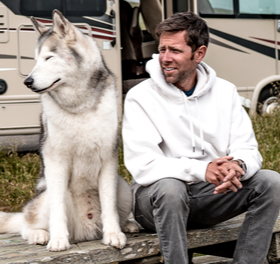What to See and Do
Hiking and Biking
Hummingbird Springs Wilderness Trails
The Hummingbird Springs Wilderness Trails are several scenic out-and-back routes found around the expansive BLM site. The trails vary in difficulty, but most of them are suitable for hikers of all skill levels. In addition to hiking, the routes are excellent for off-road vehicle driving. The trails are typically pretty quiet, and there's a decent chance that you'll have them all to yourself during your visit.
Length: 3.5 miles
Intensity: Moderate
Crystal Hill
The Crystal Hill trail is located at the Kofa National Wildlife Refuge and features a steep rocky climb. The short out-and-back route isn't particularly well-marked or maintained, so it's a bit of an adventurous challenge for those who like to explore. About halfway up the climb, you'll start to find cool crystals that have fallen down the hill, and you're allowed to collect up to 10 pieces or 10 pounds. There's no shade around the hike, so anyone traversing it should bring lots of water and if necessary, sun protection.
Length: 1.4 miles
Intensity: Moderate
Signal Peak Trail
Located within the Kofa Wilderness, the Signal Peak Trail is a difficult out-and-back trail that requires quite a bit of steep climbing. Along the way, you'll see lots of amazing terrain formations, and as you continue to climb, the panoramic views will only become more and more spectacular. The best times to embark on this hike are between March and October, and if you bring your pups, they must remain leashed at all times.
Length: 4.3 miles
Intensity: Hard
Fishing & Boating
The nearest significant body of water to the Hummingbird Springs Wilderness is the powerful Gila River, which flows between the BLM site and the city of Phoenix. The mighty stream is a popular destination for anglers as it's home to substantial populations of largemouth bass, channel catfish, flathead catfish, sunfishes, and the protected Gila trout. The river features relatively gentle rapids, making it a wonderful place to take your kayak, canoe, or small raft out on the water.
Climbing
If you're a skilled, adventurous climber, your best option in the area will be to travel to the nearby Big Horn Mountains. If you're bold enough, you can take on Sugarloaf Mountain itself, which features a number of climbing routes ranging in difficulty from 5.4 to 5.10c. You can also attempt to climb the other mountains in the range, including the majestic Big Horn Peak.
Wildlife Viewing
While camping in or exploring the Hummingbird Springs Wilderness, you'll have opportunities to observe a variety of interesting creatures among the unique vegetation. You'll definitely want to regularly look up; Cooper's hawks, prairie falcons, and golden eagles are all known to soar overhead in the region. In terms of land-dwelling species, a few that you may be lucky enough to spot include desert bighorn sheep, mule deer, desert tortoises, kit foxes, and Gila monsters.
Picnicking
If you plan on having a relaxing picnic at the Hummingbird Springs Wilderness BLM site, you'll need to come prepared with your own seating. Due to the nature of the desert land, the best bet may be to bring portable chairs and some kind of a fold-out table or another surface. If you're willing to do a bit of climbing or hiking with your picnic gear to reach a higher elevation, you can eat while looking out over the picturesque landscape.





